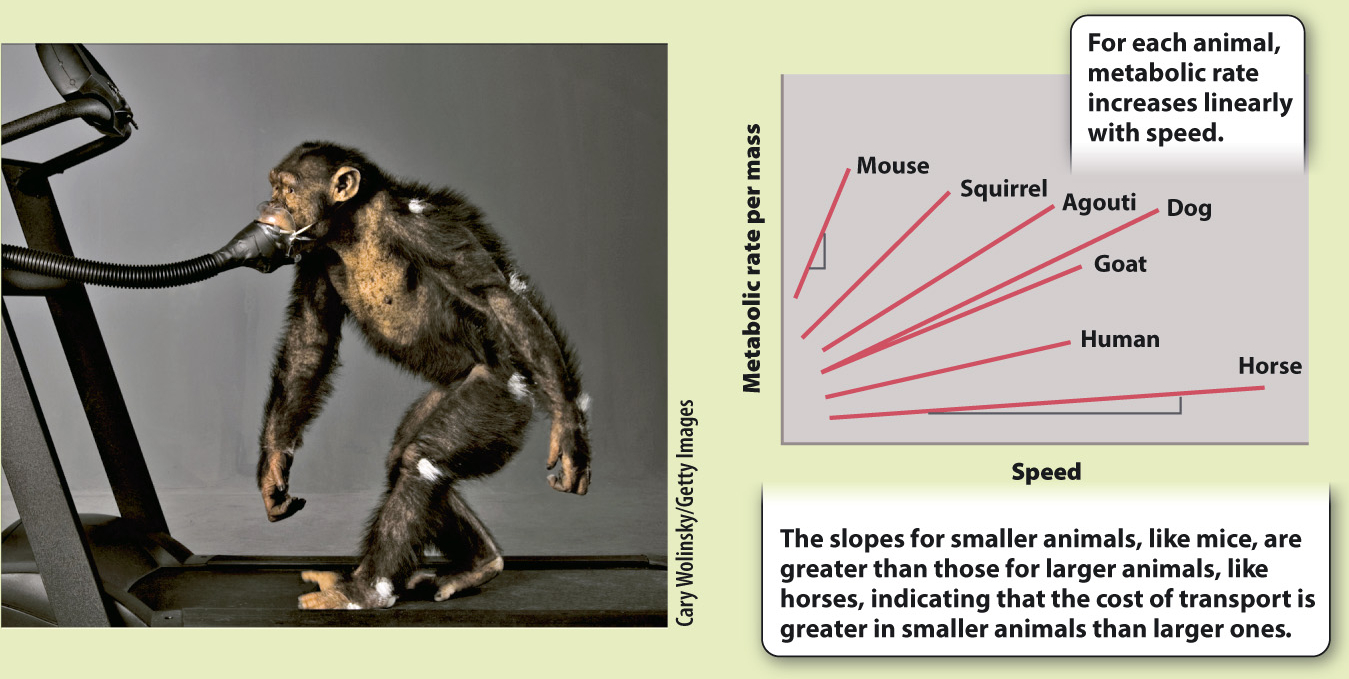HOW DO WE KNOW?
FIG. 40.4
How is metabolic rate affected by running speed and body size?
BACKGROUND In the 1970s and 1980s, the American physiologist C. Richard Taylor and his colleagues performed studies on the relationship between metabolic rate and running speed in mammals of different sizes. They were interested in understanding the energetic costs of running in different animals.
EXPERIMENT Taylor and colleagues measured oxygen consumption during running for a wide range of organisms. They trained each animal to run on a treadmill at different speeds and measured oxygen consumption using either a face mask or enclosure. Oxygen consumption was used as a measure of metabolic rate.
RESULTS The researchers found that there is a linear increase in metabolic rate with speed in different-

FOLLOW-
SOURCES Dawson, T. J., and C. R. Taylor. 1973. “Energetic Cost of Locomotion in Kangaroos.” Nature 246:313–